Setting up an Agile Content Review Process
22 Oct

Table of Contents
ToggleUh oh. People are talking about the agile content review process again.
Whether it be that friend from marketing who is always waxing lyrical about how important a content review process is to their marketing strategy. Or, the post that you’ve recently read on how it helped so and so to achieve so and so. And you had to quietly pull out your phone to get a gist of what the fuss was all about.
Whatever the case, you’re either unfamiliar with content review and its process. Or you’re familiar with it but aren’t sure why they’re so important and how to implement it.
Regardless of your circumstances, you’re at the right place.
But before we begin talking about the ins and outs of an agile content review process, let’s first get clarified on what it is.

What is an agile content review process?
A content review process is a methodical manner in which you strategize and organize the various moving parts and assets of the team throughout the creation of the content.
“Wow… Stop right there.”
Here, let me break it down.
A content review and approval process is a fixed number of steps that any new piece of content must go through before it can be presented to the public eyes.
It ensures that the work you’ve done is catering to your target audience in the best manner possible.
Agile development methodologies require periodic sprint reviews – meetings where the development team reviews and presents the user stories they completed during a sprint. The sprint review is open to anyone interested in reviewing the sprint’s accomplishments.
Each piece of content that your company produces, be it textual, visual, etc. needs to match the company ethos and a set standard. Without this, the vast array of content that your company produces will never have a clear brand consistency.
The agile content review process plays an active role to make sure the team’s communication and time are efficiently aligned to fulfil these goals.
[Free eBook]
Content Review Process
Download your free Content Review Process eBook and use it for your next content review.
DownloadWhy is the content review process paramount to the success of any content?
Now that we understand what a content review process is, let us dive straight into why we should care about it. Below are the top five importance of having a concise agile content review process.
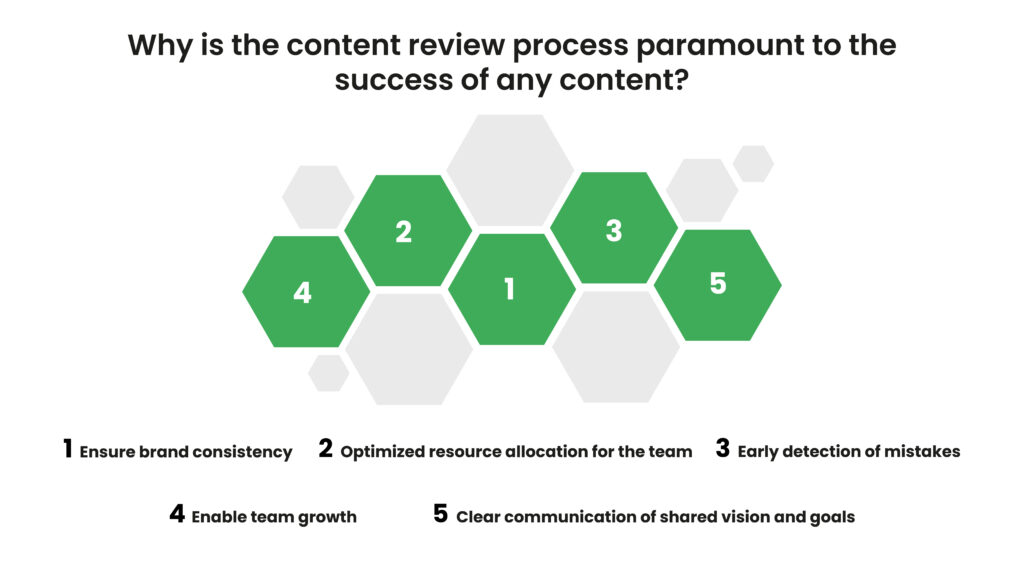
Ensures brand consistency
To ensure your company’s overall marketing strategy is tied together with a consistent and clear vision, the need for an agile content review process can’t be stressed enough.
Even for a small company with 10-20 employees, when there are multiple people writing content, you will find that the tone of their writing will vary according to the writer.
You might still be able to escape this. But for companies that are finally scaling up, it is near impossible to maintain their brand ethos and message throughout the various content.
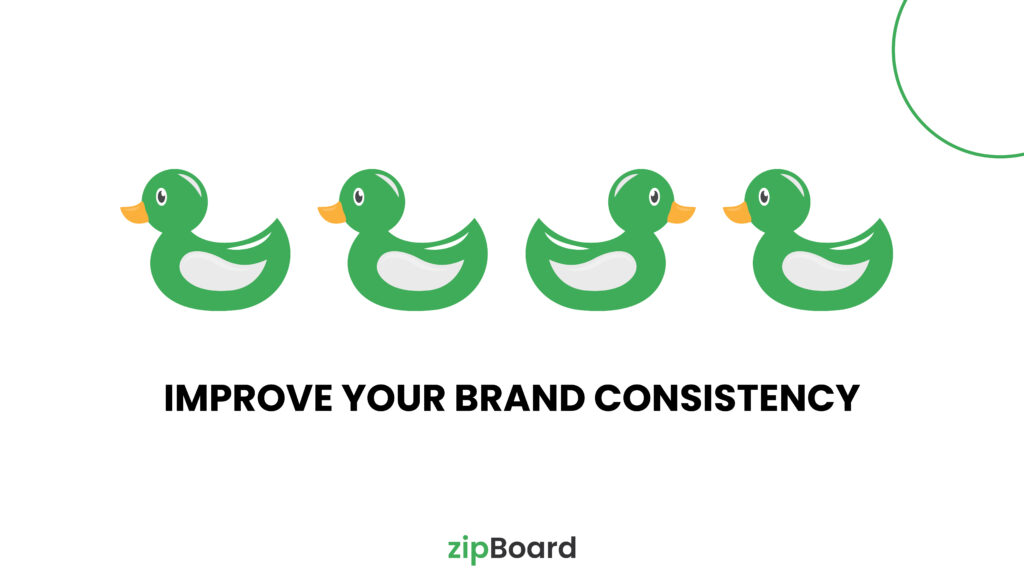
Optimized resource allocation for the team
Regardless of whether you have a sound agile content review process set, your team will always review content before it is published.
This approach however is very ad-hoc and requires unstipulated and sudden demand of time from other team members. Making sure you adhere to these guidelines and creating a clear outline beforehand will drastically reduce the time you need to create/review content.
Mind you, this is not only limited to your team’s time. The agile content review process also helps optimize the use of monetary resources, the number of team members required and the time you need from an SME. This helps you to conduct an effort vs value analysis and prioritize your backlog properly, giving you a higher ROI on your content development.
Early detection of mistakes
When you start writing content or designing a video without having a clear outline that is agreed upon by the team before developing it, you’re heedlessly creating more revisions and reviews for yourself and the team.
This also contributes to the overall saving of time and effort.
Enables team growth
Having stipulated roles and responsibilities within a team encourages one to own the work that they do. In an optimized agile content review process, the person creating the content now might be the one reviewing someone else’s content in a week (More on roles and responsibilities later).
This distribution and efficient cycle of roles forces the team members to come out of their comfort zone at both technical and interpersonal levels.
Clear communication of shared vision and goals
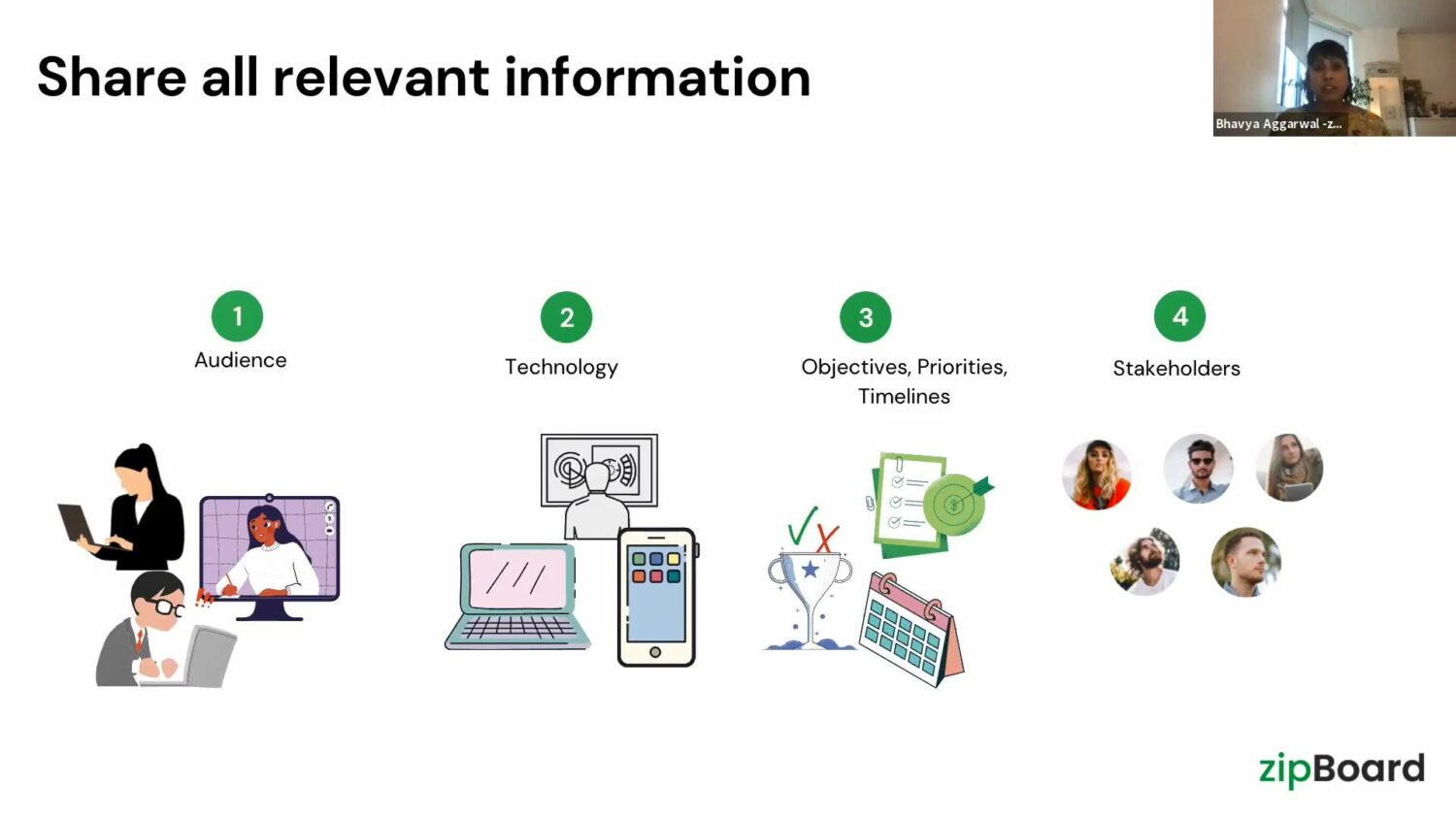
Not every topic that is chosen is fit for the company’s vision and marketing goal. How do you know about this? Through a content review process.
With a clear objective and intention for each campaign regardless of the content type, ensure that the topic you create content for is always beneficial to the end goal.
Any other topic outside of the vision and goals is discarded in the first review process itself with an optimized agile content review process.
You also make sure that nobody in the team strays away from the initial objective of the content throughout the journey of its creation.
Webinar
Build your content review and QA process
See how you can organize your QA process to build a robust and adaptive content review process.
Watch free webinarThe roles involved in the content review process
In a content review process, various team members and even external stakeholders are involved, and they have certain roles and responsibilities.
Some of these roles can be quite flexible while others tend to remain the same before it is edited.
Below, we’ve provided five such roles that are consistently involved in any content review and approval process.
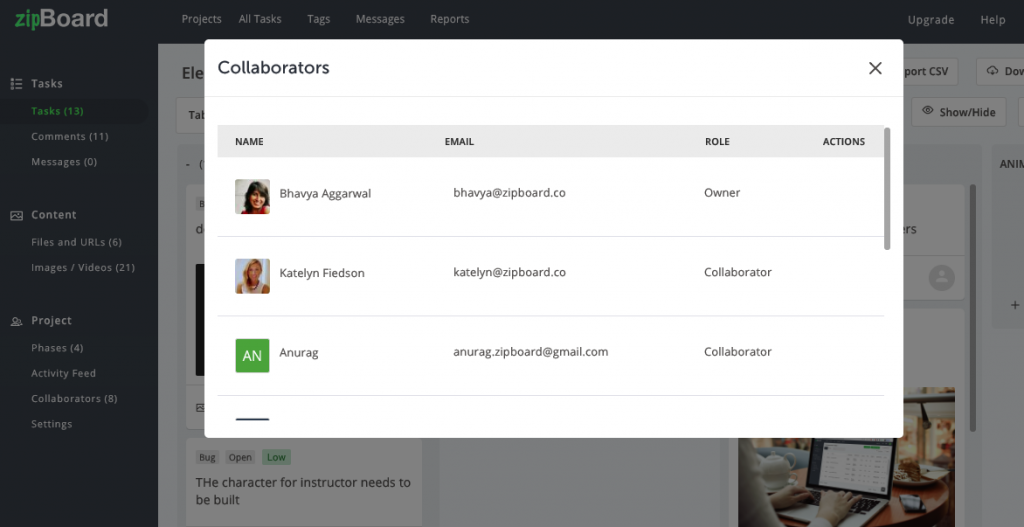
Content Owner (Creator)
This is the creator of the content who takes ownership. It is the creator’s responsibility to ensure that the content reaches its end goal.
They are the ones who create the outline, come up with the draft and submit the content for review. They also take charge of collaborating with other stakeholders as and when required.
Content Strategist
They are sometimes referred to as content managers. These people are responsible for the overarching implementation and execution of the team’s marketing strategy.
They directly play into deciding how they want the content to look and which content moves ahead or not. It is their responsibility to make sure that each new content is beneficial to the overall end goal, and whether or not people are adhering to the content review process.
Content strategists manage the calendar and allocate content to creators. They’re also the final reviewer of each piece of content before giving the nod for the content to be published.
Content Reviewer
These people are the other team members besides the content strategist and the writer. Their responsibility is to review content.
The content reviewer is the first point of contact for the creator for any review and general feedback-related tasks.
Primarily they are responsible for providing content creators with recommended revisions before the creators take the content to the strategists for a final review.
SME
Subject Matter Experts are seldom required based on the content but their suggestions and feedback are invaluable.
They are experts in their respective fields and their time and recommendations have to be properly managed. Without a sound content review process in place, getting in contact with these people can be haphazard and ultimately unsuccessful.
Although generally external stakeholders, these experts can even be in-house team members like engineers, experienced designers, expert marketers, CEO, etc. You get the gist.
SEO Manager
Even though the content creator is responsible for optimizing the content for SEO. It is the SEO managers who are primarily held accountable for proper SEO-optimized content across the various channels.
These technical marketers generally come into play during/ just before the final review.
[Free eBook]
Content Review Process
Don't forget to download your free copy of the content review process eBook.
DownloadCreating an agile content review process
Getting to the meat of the matter.
Now that we’re familiar with all the nuts and bolts of the agile content creation process, we can get started with creating one that best fits your needs.
You need to flexibly design the process in a way that suits both you, your team, and the content strategy. This means that there is no one content review and approval process to rule them all. (Yes, that was a LOTR reference.)
However, we’ve listed seven steps with which you can optimize your process that will best fit you, your team, and your company ethos.
Like a custom-tailored coat or dress.
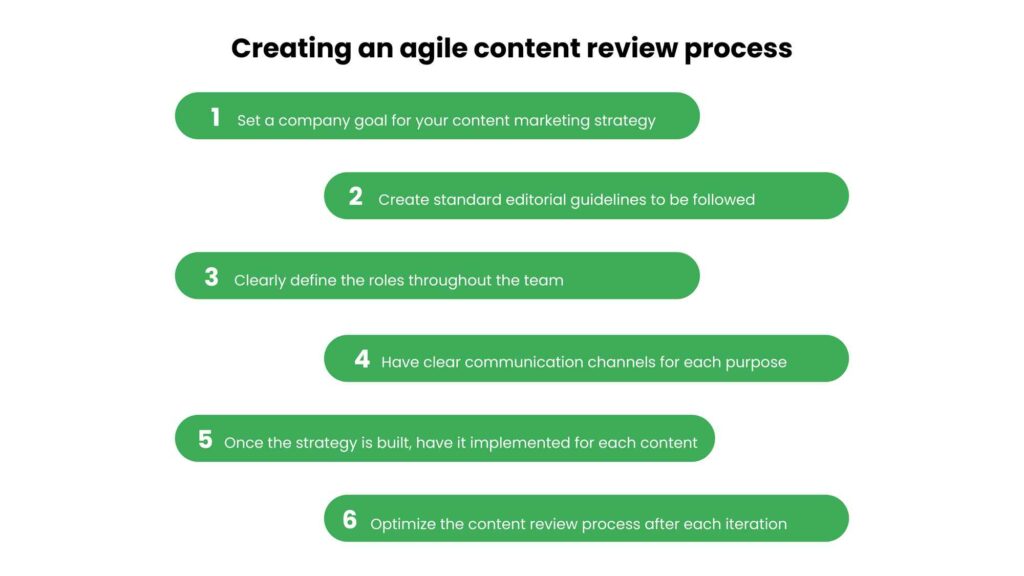
Steps to create a sound agile content review process
Set a company goal for your content marketing strategy
Before we even begin choosing a topic for the content, the first thing we need to do is tie up the company goal with your current content marketing strategy.
If you don’t have one at the moment, then check out our blog on how to create a content marketing strategy in 2021.
Once you have a working content marketing strategy in place, you need to define a goal for your company. These goals should be broad enough to have room for some wiggle space and narrow enough to be precise on what is wanted.
An example could be, “Get at least 20 new people from the edTech background to subscribe to our product every month.”
This gives us sufficient room to try various content that could interest/benefit people from the edTech background, while simultaneously giving us a broad topic to work on from which a multitude of sub-topics can be chosen.
A company goal can also be to target a certain customer persona. As these goals are much broader than an objective of content, they do not necessarily have to be a SMART goal. We’ll discuss those in the sections below.
Create standard editorial guidelines to be followed
After you’ve come up with a company goal, you need to finalize the editorial guidelines for the team.
For companies having multiple content creators, this is one of the most significant pieces of document. Yet, often overlooked.
As your team grows, you will have a variety of writers, designers, and reviewers with different backgrounds and styles. This document will then become your bedrock for maintaining your brand consistency, both for textual and visual content.
Like your overall process, your guidelines require periodic optimization and tweaking to ensure that it benefits both the team members and the company.
You could include N number of things in your guidelines depending on your company and its niche. But there are a couple of pointers that you should try to include in your guideline.
- The spelling, grammar, and referencing. E.g., If your content is in English, you might want to have a fixed dialect to avoid inconsistency.
- Attaining a certain level of Search Engine Optimization.
- The style and font size to be used.
- The tone of the company.
- Where to use and where not to use satire.
- When and how to mention your competitors.
If you’re creating one for design elements, try to include:
- The dimensions of the visuals based on the platform.
- A range of company colours to be adhered to.
- The type of graphic depending on the content.
- The font used in the graphics.
All of these require a visual feedback and review tool that can help you collaborate with your stakeholders with ease.
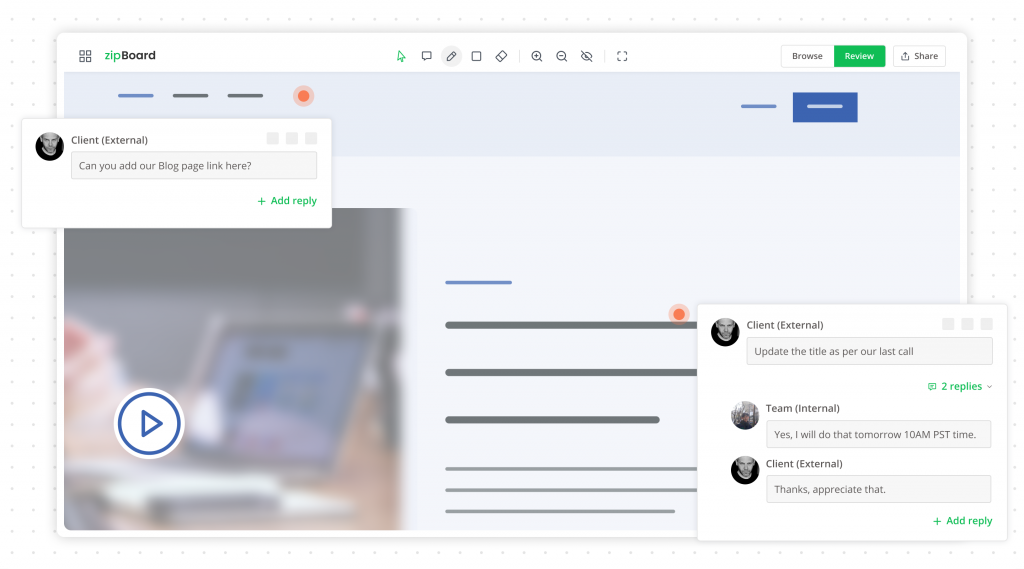
Here, you will also need to define the term, “done”. After completing a review process, have it documented what done means. Such as, if you’re the content reviewer, done might mean that you have reviewed the content to the best of your ability and that it is ready to move to the next step.
Clearly define the roles throughout the team
We’ve discussed all the stakeholders involved in an agile content review process and what their roles and responsibilities are.
So, all that is left is for you to designate these roles to the members of your team. When designating the roles, the background and skill of a person need to be taken into consideration.
Say, your company is really small, you could designate the role of the content specialist to the CMO or the CEO itself.
However, there needs to be a clear understanding of the time this process would require regularly so that there are no bottlenecks in the future. This is true for any of the roles you assign within your team.
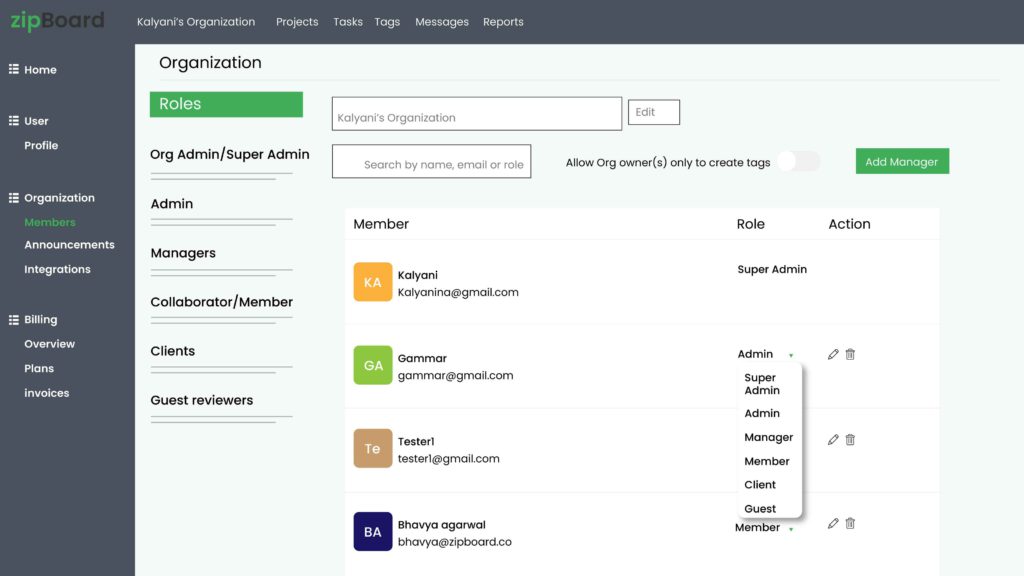
Of course, the involvement of subject matter experts needs to be handled a bit differently as they can be someone from outside the company as previously discussed.
Nonetheless, you can always collaborate with them in advance and let them know your requirements for the content development process. If they are quite busy, then you can have them come up with an outline so that you need not keep bothering them time and again.
You can have them review it only once you’ve completed the content.
Collaboration with SMEs can still be a bit daunting and then there is always the chance of miscommunication, especially if you’re having to collaborate with them asynchronously.
These experts can also be people from non-technical backgrounds. So, you need a stakeholder collaboration tool with a simple UI that can help you seamlessly collaborate with various file formats.

Have clear communication channels for each purpose
Creating a content review process with agile methodology is a balancing act between creating well-reviewed content and creating it in the fastest/ most efficient way possible.
This step is all about having a designated communication channel.
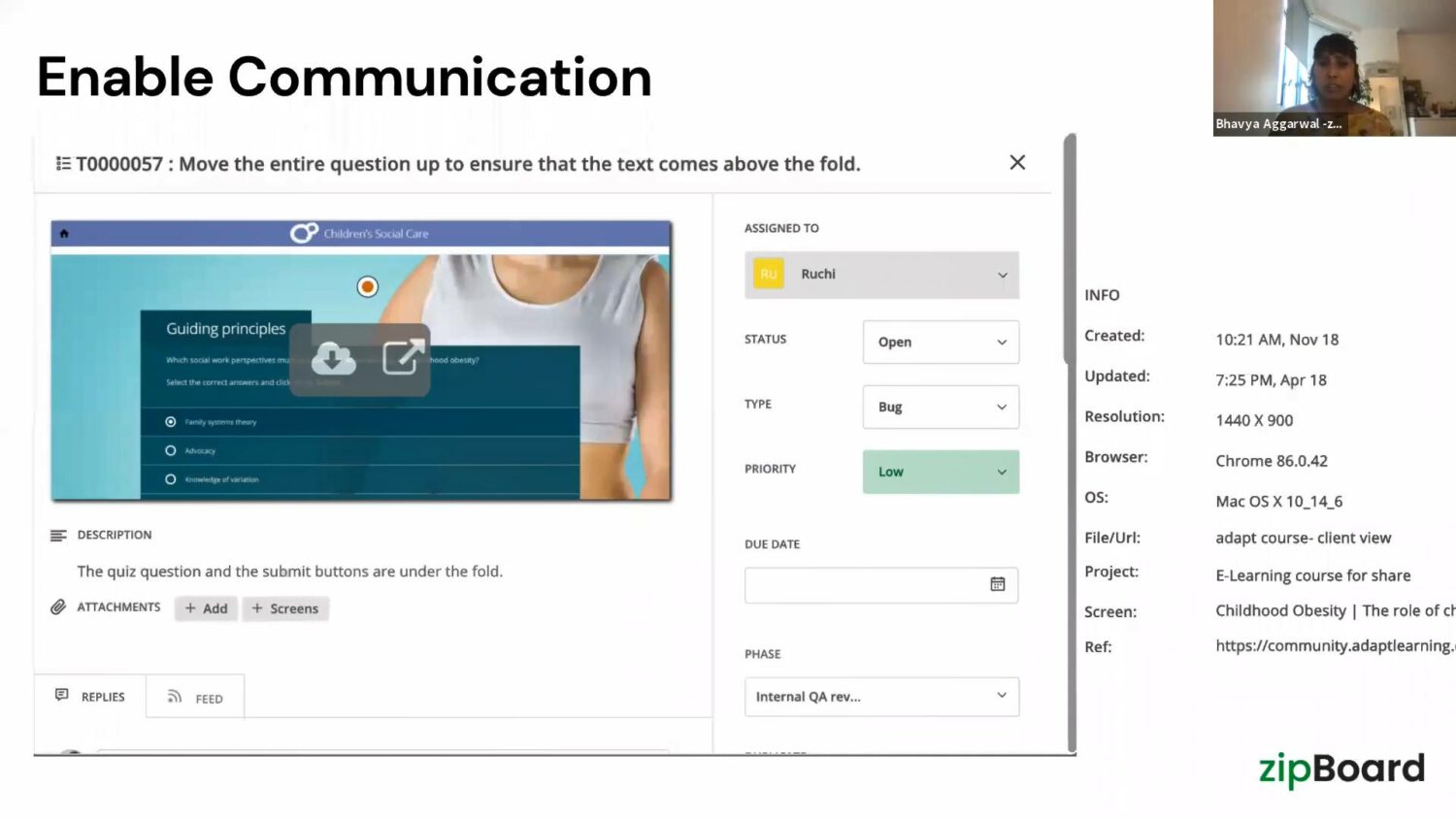
Now there are two ways you can go about this:
1. Use multiple channels for the review process
This step includes having different communication channels based on the use case. Such as Slack, MS Teams, Emails, Google Workplace, long screen-share meetings, phone calls, etc. The problem is that there’s no coherent centralized platform for containing all the reviews.
2. Use a centralized platform for the review process
To escape endless email chains and needlessly long screen-share meetings, you could use a centralized agile content review platform like zipBoard. This allows you to have a clear communication channel for your content review process. When choosing a document review and approval platform, make sure it can process all the file formats you require. You wouldn’t want to switch from one platform to another just cause it doesn’t have digital content, would you? A centralized online proofing platform must support images, videos, gifs, live websites, documents, SCORM content, and zipped files.

Once the strategy is built, have it implemented for each content
This step can seem pretty obvious at first look. But many fail to realize the importance of this.

We’ve seen plenty of instances where teams disregard a content review process even though there is one in place.
Of course, for smaller content such as regular social media posts and snippets, you wouldn’t be required to go through the entire process. Unless you’re running a social media campaign for a particular link for an extended period.
But for contents of sizable length, you need to adhere to the agile content development and approval process. This also helps in finding and ironing out any errors/ corrections needed in the process.
Pro Tip: If you think that the review process is too cumbersome to be followed, maybe it needs an edit. And you won’t know where to start if you do not start the process itself.
Remember why you started this and if you’d like to go back to square one again after all the preparation.
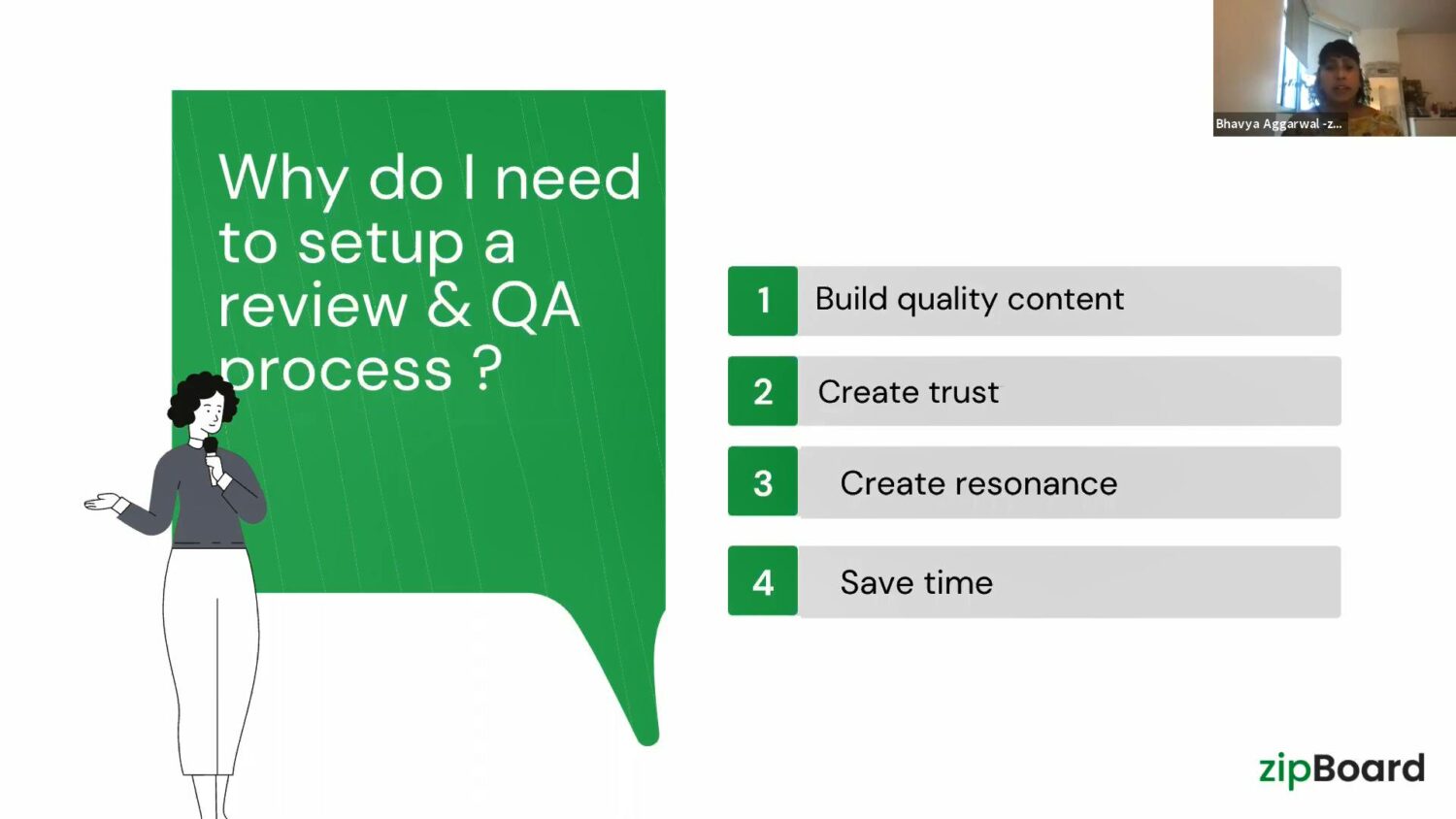
Optimize the content review process after each iteration
This is a repetitive step that is highly recommended.
It ensures that the content review process is always optimized for the team. And not the other way around.
Remember, a sound agile content review process ensures that it fits the team members as much as it fits the company and the target audience.
You should perform this step after each successful completion of a content campaign. It must include all the stakeholders involved in the process of its development. Each member should highlight what went right and what was wrong along with potential edits if any. Finally, there can be a short brainstorming session to figure out the problems with a mutual consensus.
As we mentioned earlier, there is no one-size-fits-all for content review processes. This requires timely optimization so that the process doesn’t become a burden/ outdated for the team.
With practice and each iteration, you will find that your working agile content review process is much more optimized when compared with the first version.
You can take this as a fun way to celebrate your accomplishments throughout the campaign.
[Free eBook]
Content Review Process
Download a free copy of the Content Review Process eBook to guide you in your next content review.
DownloadHow does a sample workflow look with the agile content review process?
Even though the finer details of the agile content review and approval process will differ from one team to another, these steps will constitute the bone (structure) of the matter.
Select the topic after preliminary research
The first step to developing any content is to select the topic.
This topic, however, should only be selected based on preliminary research. Which includes taking the company goal and marketing goals in mind as discussed earlier.
This is primarily the domain of the content strategist, and they are tasked with running new campaigns as per the company’s needs.
They are also authorized with assigning ownership to a content creator to take the process forward.

Create a research/outline document
Once the content topic is finalized, it is forwarded to a content creator, who will also take ownership of it. S/he will start by creating a thorough research/ outline document which will include:
- Target keyword along with the additional keywords.
- Key performance indicators (KPIs) for the campaign.
- SMART goals.
- E.g.; Get 21 new signups to the “social media marketing strategy” newsletter within the first week of the publication of the content.
- The outline of the to-be-created content. For a blog, the outline should look more than just a table of content. Because it must contain all the relevant points you want to include and the supporting documents for it. It is an in-depth document where all the brainstorming for content should be done. The writing part itself should be solely based on the research done during it.
- The purpose of the content from an organizational perspective.
- The persona of the target audience.
- The pain points we’re trying to incorporate in the content.
- The unique selling proposition (USP) that the content provides in regards to the pain points.
- References for the content. This could be blogs, news articles, research documents, informative visuals, etc.
Review research/outline with the team
This is the first sprint review where the completed research/outline is presented.
Once you’ve created the outline document containing all the necessary research, the first step of review begins.
Here, the content strategist will review the document to iron out any early mistakes in the intent of the campaign.
This step is especially important because it reduces the mistakes/ revisions later in the development. As, once the outline/ research is finalized, the content development process rides solely on it.
This step also requires the review of SMEs for content requiring expert guidance.
Develop the content
The next step of the workflow is to develop the content.
This is self-explanatory. However, there are three things to note here.
- The content is to be developed completely before the next step of the review process. This enables the content creator to develop their content with ease without any hiccups. This is why the first review step explained earlier is pivotal to the entire content development process.
Note: Agile content review process aims at creating content with shorter development cycles that allow for more frequent content updates than prior content review processes.
- This however doesn’t mean that there is no accountability during the development process. This is where daily scrums come into play. These short 15min meetings are held every day. Scrum.org defines a daily scrum as, “a 15-minute event for the Developers of the Scrum Team.”
Here, the scrum team is the content development team, and this meeting shouldn’t be taken as more than a daily catch up meeting.
- The final step requires the content owner to review the content themselves once it is completed. This ensures that smaller errors such as typos, grammatical errors and word choices are corrected beforehand.
Get it reviewed by the reviewer/editor
The next step of the review process is quite plain and simple, which is also the second sprint review for the agile content development process.
Here, the content owner forwards the completed content to the content reviewer. S/he after reviewing it, suggests any corrections and edits that might have to be made.
These suggestions and edits are then finalized after a short brainstorming session between the two.
The content is then edited based on viable suggestions.
Final approval
Okay, you’ve done the preliminary research, you’ve finalized the topic, developed it, and had it reviewed. What now?
The final step of the agile content review process requires you to get the nod of approval from the content strategist, SME, and SEO manager. And this is the last sprint review before the content is published.
If the content needs a final review from the SMEs then you get it done here. Once that is done, you take the content to the strategist who will review it for the last time and approve it for publication.
The SEO manager then takes charge of the content production, further optimizing it for SEO in tandem with the content owner if required. Remember that the editorial guidelines contain basic SEO needed for all content but the SEO manager needs to be an expert in the field.
A technical SEO manager will optimize the content based on the platform it is going to be promoted on.
Webinar
Build your content review and QA process
See how you can organize your QA process to build a robust and adaptive content review process.
Watch free webinarCommon pitfalls to avoid for an agile content review process
Involving unnecessary members in the team
One of the biggest pitfalls in the agile document development and approval process is the addition of unnecessary team members in the content review process.
You may experience this due to reasons such as unclear division of roles and lack of clear leadership.
Avoiding this will spare you from the misuse of team resources.
Remember, the key is to involve as little as necessary, and as much as needed. Be concise.
Lack of empathy
Another point that many companies and teams overlook is the need for empathy. Without empathy you expect your team members to be robots with no heart and brain of their own. In such an environment you cannot foster harmony.
Here are some ideas to help you keep the peace and keep your content marketing team productive.
- Trust their judgment on minor details.
- Listen to their suggestions and try to incorporate them.
- Ensure that miscommunication doesn’t succeed using an asynchronous content review tool.
- Respect each other’s priorities and tasks.
- Take pride in both big and small victories.
- Do not keep shifting the goalposts. Unless in an emergency, making a content owner scrap their content or suggesting edits to the outline midway can leave them feeling demoralized and fatigued.
Losing sight of the objective
Focus on the goals you set out to accomplish with this content. You can easily lose sight of the ground rules you first set at all those meetings.
Sometimes, the campaign you run might be for a client. So, you need to determine if the result matches the requirements of the specification or contract. For this, you need to conduct user acceptance testing.
Lack of an optimized agile content review process
Like we discussed earlier, optimizing the process after each iteration is a good practice to have.
Without it, you’re sabotaging your review process. So, this is a big pitfall you’d want to avoid.
Headed by the content strategist, having a repeatable system needs continuous optimization of the agile document review and approval process.
Articles, requirements, target audiences, etc., always change and so should your agile content review process. Continuous conversations with the team will help you to come up with innovative tactics to build your content review and QA process.

[Free eBook]
Content Review Process
Don't forget to download your free copy of the content review process eBook.
DownloadTools for an agile content review process
Now that we are aware of the entire content review and approval process using agile methodology, the step left is to dot the i’s and cross the t’s.
Meaning we have the framework in place, but we need the tool fit for an agile content review process.
These tools will allow you to maximize the strengths and expertise of your team while simultaneously cutting down on bottlenecks.
zipBoard
zipBoard is the one online proofing platform that your team needs for its agile content review process.
With features such as screen-recording and annotations on live video, this intuitive tool will help you significantly cut down the time on live meetings and unnecessary clarification phone calls arising from miscommunication.
This easy-to-use cloud-based tool doesn’t require you to install any on-premise software. And with agile project management features such as Kanban board and Table view, your backlog management for the entire review process becomes seamless and well-tracked.
With more features for accountability and transparency, zipBoard makes sure your online proofs are reviewed and approved on time; removing any bottlenecks for your creative works.
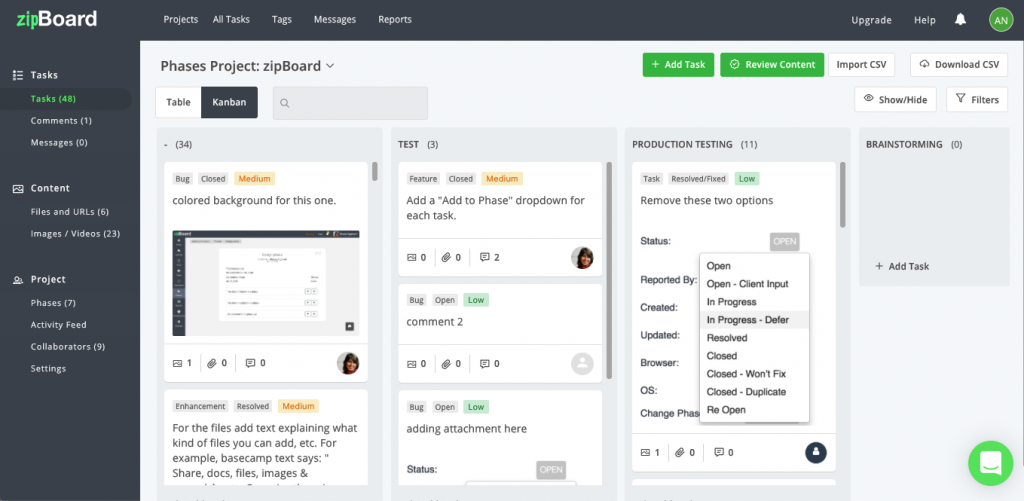
ReviewStudio
In ReviewStudio, customers get access to a centralized collaborative platform where they can provide immediate creative input on pictures, videos, PDF, and HTML files. Some customers find this program to be a bit complicated at first, but the excellent customer service and simple feedback mechanisms make it worth the effort.

Filestage
Filestage is a content-proofing software for marketing departments. This software solution gives you the option to evaluate a variety of file types from a central location. Filestage also offers several options for providing accurate and meaningful feedback (for example, comments, annotations, and attachments).
Although some clients who aren’t as tech-savvy have difficulty with this at first. Overall, we find it to be a useful platform that helps create consistent workflows.

[Free eBook]
Content Review Process
Don't forget to download your free copy of the content review process eBook.
DownloadConclusion
Congratulations! Now you don’t have to get awkward when someone brings up the topic of the content review process again.
You will even be able to contribute to it.
But more importantly, you understand what an agile content review process is, how to implement it and what to expect from it.
So, are you ready to start with your first content review and approval process?
Let us know how it went for you. And what clicked for your team.
Was it the optimized content review process? Or was it an intuitive tool for it?
Review Content Better with zipBoard
Integrate zipBoard into your agile content review process and have one centralized online proofing platform for all your reviews/QA needs.
Get a Free Demo!Author’s Bio:
Gaurav is a SaaS Marketer at zipBoard. While earning his degree in CSE at KIIT, Bhubaneswar, he rediscovered his inner love for creativity as he got into his first social internship. If he isn’t busy working, you can find him around his friends/family or enjoying a good football match or a passionate discussion over it, whichever works.
Related Post
Recent Posts
- Best Practices for Efficient Document Reviews and Collaboration December 18, 2025
- MEP Document Management: How to Streamline Reviews & Avoid Rework October 3, 2025
- What Is Online Proofing Software? And Why Content Review Breaks Without It July 11, 2025
- How Laerdal Medical Cut eLearning Review Time by 50% with zipBoard’s Visual Review Tool July 9, 2025
- Why Your Team Needs a Content Feedback System (Not Just Comments in Docs) May 28, 2025
©️ Copyright 2025 zipBoard Tech. All rights reserved.


